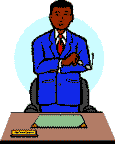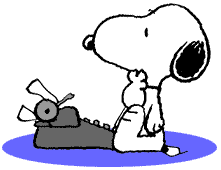
 "Writing about music is like dancing about architecture." —Anonymous Here's some "tongue in cheek" Grammar Advice and Dangling Modifiers Tarleton Writing Center Citation Builder
How to write about music  Research Links and remember: Caveat Lector (let the reader beware) which means - don't believe everything you read! |

Writing Hints  | First of all, Turn on your Spell Check and Grammar Check! Word 2010: Click the "File" tab Click "Options" on the menu at the left Click "Proofing" on the menu at the left of the window that opens Under "When correcting spelling and grammar in Word," check all boxes Click "Settings" beside Writing style and check all boxes. Word 2007: Click the round Window symbol at the top left of your screen Click "Word options" at the bottom of that drop-down menu Click "Proofing" on the menu at the left Under "When correcting spelling and grammar in Word," check all boxes Click "Settings" beside Writing style and check all boxes. |  | Now that you have Grammar Check enabled, be sure to right click on EVERY green line and make the necessary changes. |
Using the "References" Tab in Word 2007 Choose the "References" tab at the top of your Word document In the drop down menu beside “Style,” choose “Chicago.” When you are ready to include a citation, choose “Insert Citation.” Click on “Add new source” – if you use that source again, it will appear as a selection. The “Create Source” menu will appear. Check the box that says “Show all bibliography fields.” Choose your type of source from the first drop-down menu. The default is “books.” Fill in the blanks needed for your bibliography entry. When you click “OK,” the citation will appear in your paper. At the end of your paper, click on “Bibliography” and then “Insert Bibliography” and your sources will appear, formatted, at the end of your paper. The entries should use hanging indent, however, and do not appear that way. To remedy this, select all of the entries, right click, select “Paragraph,” and under “Special,” choose “Hanging.” This should indent the second line of each source entry. The example below is the bibliography entry for a textbook.
Bibliography Campbell, Patricia Shehan and Carol Scott-Kassner. Music in Childhood. 3rd Edition. Belmont, CA: Thomson Schirmer, 2006. Scholarly Writing  | APA Guidelines |  | Guide to grammar and writing |  | Avoid casual writing, such as using first person, contractions, expressions ("slow as Christmas"), unsupported opinions, biased statements. |  | Use quotations and italics properly when referring to titles Use this chart. |  | Use explicit language. Be clear. Avoid general terms, such as "good," "bad," and "ugly." State specifically what you mean so the reader does not need to interpret. |

Information Information
 | How do you know when you need information? |  | How do you know where to find information? |  | How do you know how to use the information? |

Final Draft Checklist ____ included a bibliography? ____ read the paper aloud to hear any mistakes? ____ ran spell checker? ____ avoided contractions and abbreviations? ____ avoided action verbs as inanimate objects: “This article tells us little.” ____ used shortened references for 2nds, 3rd appearances of a source? ____ used ibid.? ____ inserted page numbers? ____ used: “however;” in the middle of a sentence? ____ numbered and titled all examples and illustrations? ____ referred to all examples and illustrations in your text? ____ inserted quotation marks outside periods and commas? ____ used italics for complete works and quotes for parts of works? ____ used italics for foreign expressions not in standard use? ____ fixed hanging “this” by adding a noun? ____ tightened up (combined sentences) and fleshed out (dates, examples)? ____ provided dates wherever possible? ____ kept “I” (first person) to a minimum? ____ formatted long quotations (3 or more lines) as block quotes

Order of Parts of the Paper (applies to undergraduate research papers only) A scholarly manuscript falls into three main parts of division: the preliminary pages, the text, and the reference materials. Parts of some of these sections are optional, and you are not required to use all of these sections for every paper. See assignment requirements. The order, regardless of what parts may be left out, is as follows: Title page Copyright page (optional) Dedication, Acknowledgments, Preface or Foreword (if appropriate) Table of Contents List of Tables (if appropriate) List of Figures, Maps, Charts, Diagrams, and Schemes (if appropriate) Text, including the introduction and all chapters Appendix (if appropriate) Bibliography or References Abstract Autobiographical Statement

"Where I Spend Most of My Red Ink" 
Who Cares About Those Picky Details?  | "The Orff method is founded on four principals." A "principal" is an administrator at a school. The correct spelling should have been "principle." Now read that sentence from the point of view of a person judging your level of education and knowing what a "principal" is. Oops! ORFF METHOD    
|  | Although not all commas make such a crucial difference in meaning, here is an illustration of the necessity of the humble comma. The following sentence is interpreted by means of punctuation in two very different ways. Woman without her man is nothing 
1. Woman; without her, man is nothing. 2. Woman, without her man, is nothing. |
|  | Then there's this one Come on, people - punctuation saves lives!! Come on, people - punctuation saves lives!! | "Let's eat Grandma!" "Let's eat, Grandma!" |

http://www.graphicsbycarla.com

|








